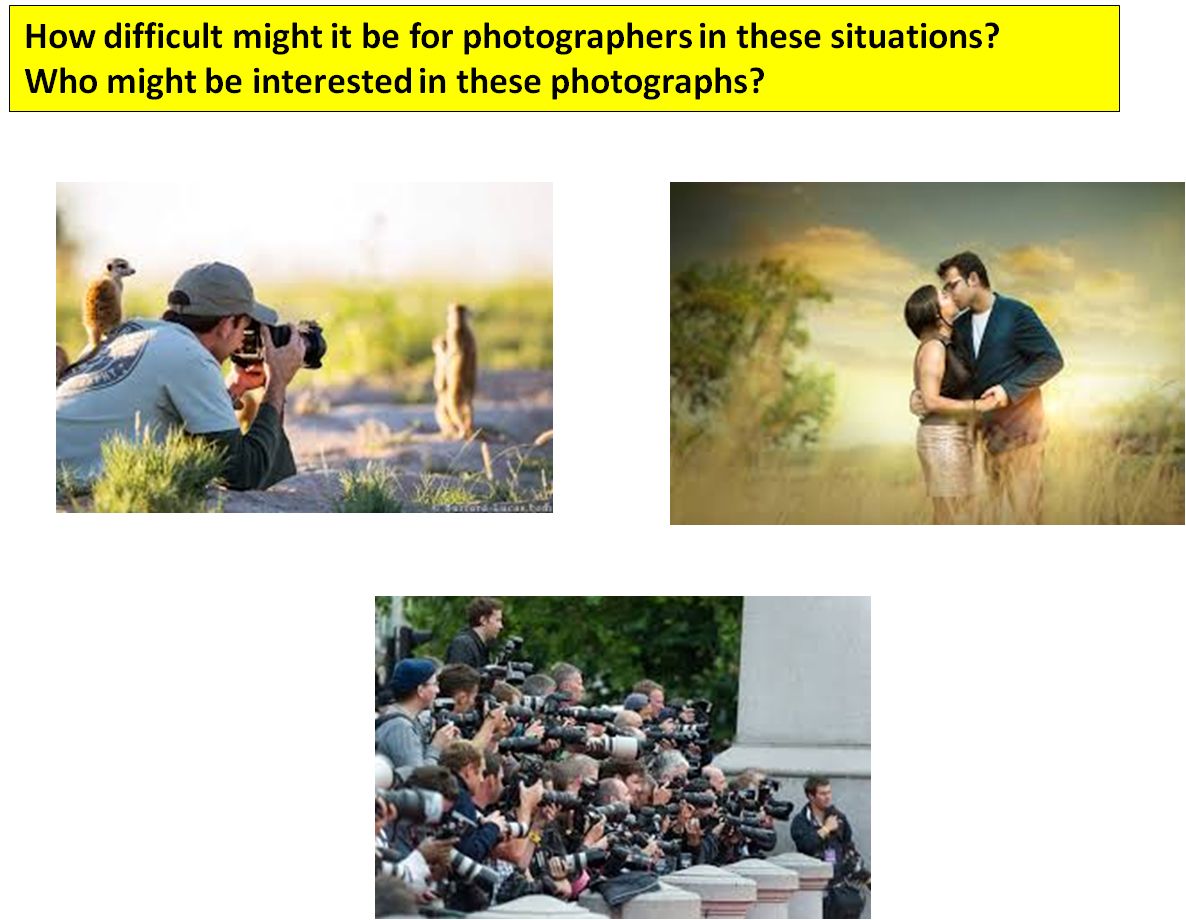
In part two of the Cambridge English Advanced Speaking test, you are given a piece of paper with 3 photos on it. The photos are almost always about people.
You have to talk about 2 of the pictures, on your own, for a minute. Then the examiner will ask the other candidate a question about your pictures. Next, the other candidate will have to talk for a minute about some different pictures, and you will be asked a question about those pictures. The technique for answering this follow-up question is to respond in about 3 sentences and try to show off your vocabulary.
Today we will focus on what to say in your 60 second 'long turn'. In the exam, you don't get time to plan or make notes, so now is the time to prepare!
Do's and Don'ts
- You are asked to talk about TWO pictures. Choose two and say nothing about the third one.
- Do not simply describe the pictures: "I can see a car. The car is red. There is a tree." You aren't asked to describe them. Compare the pictures - that's explained more below.
- Don't waste the first five seconds by explaining which pictures you have chosen. Just start comparing the pictures! (If you feel you have to make it clear, you can point to the pictures you have chosen.)
- Dead air ... is still a crime! You get 60 seconds to do this task. Use all of it! When your time is up the examiner will stop you.
- The examiner tells you what to do, but the task is also printed on the page with the photos. Refer to that page to make sure you talk about both bullet points.
- While you are comparing the photos, try to look at the examiner and the other candidate from time to time. It's hard because you have to look at the pictures, but try not to talk to the photos - make eye-contact!
ALWAYS BE COMPARING!
*When the examiner gives you the instructions for the task, he or she will always start, 'I'd like you to compare two of the pictures and say...'
ALWAYS BE COMPARING!
Comparing is the heart of the task!
If you aren't comparing,
you aren't scoring points.
Comparing means saying
what's the same in your chosen pictures and what is different. There are many ways
you can do that,
but the easiest way is
to use the magic CAE words:
The Three Magic Words- Both ...
- Whereas ...
- While ...
***Let's try with these photos!

*Example of what to say:
"Both pictures show men using phones. Whereas in this picture the man is wearing a suit, in this picture the man is dressed in some kind of traditional costume. While the businessman is sending a text or checking his portfolio, the man in the fluffy hat is checking his voicemail."
There are always lots and lots of possible comparisons:
- indoors/outdoors
-day/night time
-cheap/expensive
-old/new
-old/young
-traditional/modern
Even if you have no imagination, you can practice finding similarities and differences before you get to do this task.
Task 1: Instructions:
These photos show situations in which someone is taking a photograph. Compare two of the photos, say how difficult it might be for photographers to do their job in these situations and who might be interested in these photographs.

Task 2: Instructions:
These photos show people having a quiet moment. Compare two of the photos and say what picture best illustrates the idea of peace and quiet and why moments like these might be necessary in life.

Task 1: Instructions:
These photos show situations in which someone is taking a photograph. Compare two of the photos, say how difficult it might be for photographers to do their job in these situations and who might be interested in these photographs.

Task 2: Instructions:
These photos show people having a quiet moment. Compare two of the photos and say what picture best illustrates the idea of peace and quiet and why moments like these might be necessary in life.
 |
Task 3: Instructions:
These photographs show people using flags. Compare two of the photographs and say why flags are being used and what effect they might have on the people who used them.
|

Video Guides to watch
on your own:
on your own:





